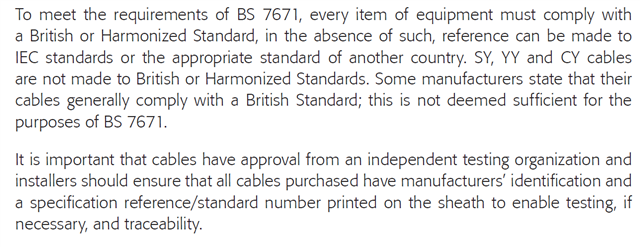Can anyone tell me if NSSHOEU cable conforms to a British or harmonised standard? I can only find reference to a German standard. I have come across it before for final connection of equipment such as pumps but in this instance it has been used for the connection from the distribution board (consisting o a single MCCB) to the pump panel in the lower reaches of a disused quarry. I’ve no concerns about its ability to do its job but we have done an EICR and I’m trying to see if we need to comment / code it. Installation certificates are not available.
